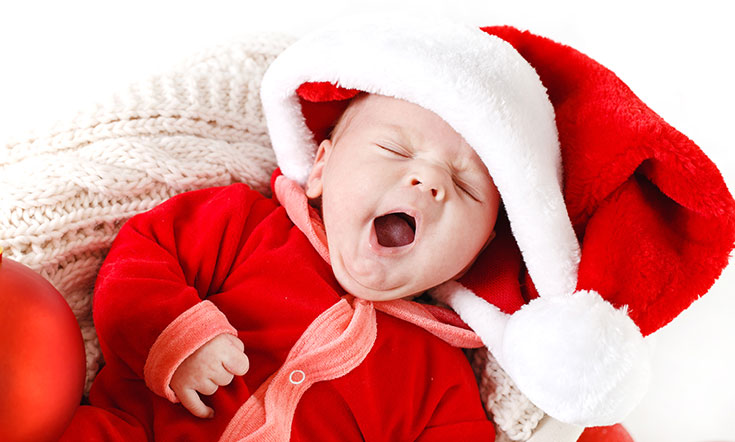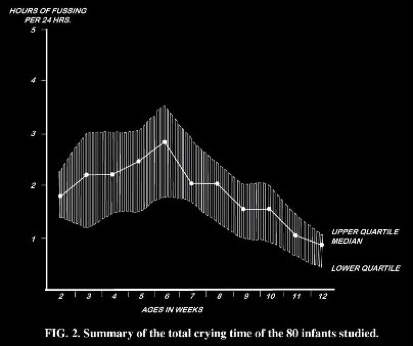

With Christmas time upon us, take a moment to think about what that means for your new born. There might be cute Christmas rompers, and baby Santa hats, but those festivities also mean noise, bright lights, and lots of interaction. This sensory overload at such a young age can make for a very unsettled newborn at Christmas.
New babies have emerged from a calm, dark womb where on a particularly interesting day they will see the umbilical cord floating past, to a foetus that’s a big day! At birth they are suddenly ejected into a busy world of lights, faces, and strange objects; of sounds and noise; of hunger, thirst and separation from the body they know intimately from the inside.
Some babies cope well, some are more sensitive and take time to adjust. But for all, it is a time for calmness, nurturing, feeding, sleep and contact with that loving body, now from the outside.
After a week or two of stunned silence, babies usually start to wake up and get increasingly needy. If they become particularly noisy and unsettled at this time they are often accused of having ‘wind’ or the dreaded ‘colic’.
If you conducted a large study where you gave thousands of parents diaries to keep, in which to record how much and when their babies fussed, cried and were unsettled, you would end up with a chart like this, with hours of crying on the side axis and weeks of postnatal life along the bottom axis:

At about two weeks babies start getting unsettled and this peaks at six weeks. At that time the average amount of crying and fussing is three hours a day, 50 per cent of the population cry more, 50 per cent less. Most of the crying is in the evening with a smaller peak in the morning. The amount of crying then decreases gradually week by week, until about three months of age when it eases. Suddenly our babies are more settled and resilient.
So that’s ‘normal’ crying. It’s what normal babies do. They aren’t sick or suffering from wind, they are adapting to life outside the womb. Colic has exactly the same time profile. For years it’s been called ‘evening colic’ and ‘three month colic’ to describe this very profile. If you read the standard medical texts on the subject they say that, ‘Colic occurs in 20% of the baby population, with over 90% of them having no organic disease’.
That’s the giveaway line.
The so-called ‘colicy’ babies are those criers on our graph in the top 20 percent. They are just as normal but more sensitive than the others. They are not suffering from a disease. We should stop blaming their tummies for what is going on their heads!
Often these tense, upset babies try to calm themselves in the only way they know. By sucking and sucking and sucking. So they start feeding more (which makes them vomit and reflux more), this also overloads the ability of their bowel to absorb all the milk (so they get ‘wind’ and explosive poos, misdiagnosed as lactose intolerance).
Or they scream and draw their knees up because they are tense and stressed (misdiagnosed as tummy ache). Their family responds to the extra noise by getting stressed themselves and by handling the baby more.
And why is it worse at Christmas?
At this time of year the world is busier and everyone more stressed than usual. Think about your last trip to the shops recently. Have you noticed the frantic energy in the stores and the increase in road rage (and that’s just in the parking station)? Sensitive babies are already trying to adjust to the busy world outside the womb, without that extra load.
So new mothers, if you can, abandon Christmas for this year and leave the cooking and racing around to others. Retreat to a quiet room. Santa will still come and your baby will thank you for it.























